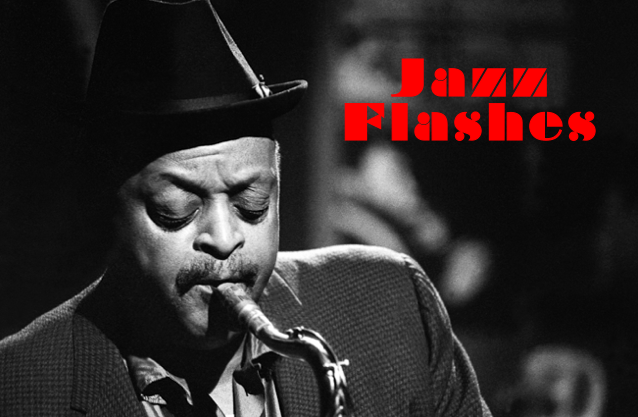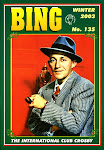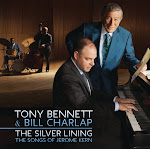
After a ten-month hiatus, The Vintage Bandstand returns with a long-overdue article on Buddy Clark, one of my favorite singers of the 1940s, whose untimely death in a plane crash in 1949 cut short a career that was then at the peak of its commercial success.
On October 1, 1949, a plane crashed on Beverly Boulevard. It had been chartered by Buddy Clark so that he and some of his friends could attend a Stanford vs. Michigan college football game and be back in Los Angeles in time for Clark to host a radio show. The tragedy ended the career of one of the most popular singers of the 1940s at a point in time when his popularity was reaching its peak. Although lately Buddy Clark has not received as much critical recognition as some of his contemporaries, like Bing Crosby, Frank Sinatra, and Dick Haymes, he was one of the most successful vocalists of his time.

Born Samuel Goldberg in Dorchester, Massachusetts, in 1912, Clark was first drawn to sports but would soon take up music as a profession, singing on popular radio shows such as Your Hit Parade and Let’s Dance, the latter starring Benny Goodman and his orchestra. Like many other singers of the era, Clark was primarily influenced by the warm sound of Bing Crosby, which can be heard particularly in his early, lesser-known sides for Vocalion. Crosby’s influence aside, in time Clark would develop into a very recognizable singer, with a distinctly smooth and romantic approach to the vocal art that earned him quite a following. As Roy Hemming and David Hajdu noted, in the years when younger listeners favored Frank Sinatra’s intensely intimate style, Clark’s rich baritone appealed to “the middle-of-the-road listener who favored a more straightforward style of pop singing” (104). This style can be heard at its best in some of Clark’s recordings of the 1940s, particularly when he decided to revive older songs such as “That Old Gang of Mine,” “I’ll See You in My Dreams,” and “I’ll Get By,” the latter recorded by Bing Crosby as early as 1928.

Though Clark was constantly heard singing live on radio and making radio transcriptions in the late 1930s and early 1940s, his career as a recording artist would not come into its own until 1946, when he was the featured vocalist with the Ray Noble orchestra on “Linda,” a Columbia recording that became an instant success and marked the beginning of a series of hits that was only cut short by his death a couple of years later. “Linda” is more of a skit than a song and includes some spoken sections: the lyrics present Clark’s character trying to talk a girl, Linda, on whom he has been keeping an eye for days, into accepting to go out on a date with him. The first three lines are memorable in their depiction of Clark’s light-hearted obsession with Linda:
When I go to sleep
I never count sheep
I count all the charms about Linda
Of course, as the song advances, Clark’s smooth crooning succeeds in breaking down the girl’s reticence and securing the date for Saturday night: “Boy, that’s a date!” says a delighted Clark toward the end of the song. With its very catchy tune, “Linda” topped the Billboard charts in 1947 and was so successful that about a year later Clark and Noble came up with a follow-up entitled “I’ll Dance at Your Wedding,” which did not achieve the same kind of success as its predecessor but which is also a very enjoyable recording.
Promotional movie short starring Buddy Clark that dramatizes the story told in the lyrics to "Linda" (posted on YouTube by neverknewtillnow)
After “Linda” hit the charts, Clark’s days as a vocalist on radio transcriptions that mostly used stock arrangements and on which he was often uncredited and backed by bands led by Freddy Martin, Eddy Duchin, and Benny Goodman, among others, were over. Hit recordings started pouring in, great sides like “How Are Things in Glocca Morra?,” Cole Porter’s “You’d Be So Nice to Come Home to,” and his revival of “Peg o’My Heart,” which have not received as much critical attention as their musical quality should have warranted. The last two years of Buddy Clark’s life were also filled with healthy record sales and chart hits, including a duet with Doris Day on “My Darling, My Darling” and another with Dinah Shore on the classic “Baby, It’s Cold Outside.” Shortly before his tragic death in the fall of 1949, Clark had taken to the stage in a production of the George and Ira Gershwin musical Girl Crazy, which could have in time opened the doors to Broadway. However, he would not have the opportunity to make it big on the stage, and the plane crash that claimed his life thwarted the wonderful career of a man who had certainly worked hard to achieve the success that he was finally enjoying.
 Buddy Clark with arranger/conductor Mitchell Ayres
Buddy Clark with arranger/conductor Mitchell AyresUnfortunately, not a lot Buddy Clark’s recorded output is readily available on CD, which could very well explain the neglect into which he has fallen as of late. Many fine compilations, such as Here’s to Romance (ASV Living Era) and Remembering Buddy Clark (Collector’s Choice), are out of print, and reissues of his 1930s recordings (Take Two’s Band Vocals from the Thirties, for instance) have also been discontinued. Therefore, the best and most affordable option available is the aptly entitled Linda, a collection released by Collectables Records featuring twenty-four of his recordings made between 1942 and 1949, ranging from a version of the novelty tune “K-K-K-Katy” with organ accompaniment to the delightful “A Dreamer’s Holiday,” his last chart entry, recorded in September of 1949. In between, there are a host of magnificent recordings that showcase Clark’s polished singing style, as well as his collaborations with arranger/conductor Mitchell Ayres, who directs the orchestra on Clark’s renditions of “It’s a Big, Wide, Wonderful World,” Bing Crosby’s perennial “Just One More Chance,” “If This Isn’t Love,” and “An Apple Blossom Wedding,” to name but a few.

The compilation also includes Clark’s very enjoyable take on Edith Piaf’s “La Vie en Rose,” with an English lyric by Mack David entitled “You’re Too Dangerous Cherie,” as well as three Latin-flavored sides from 1946-1947 (“South America, Take It Away!,” “Chiquita Banana,” and “You Don’t Have to Know the Language”) on which he is accompanied by the great Xavier Cugat orchestra, proving his undeniable versatility and ease with novelty songs. The overall sound of the compilation is good, and the liner notes by Mark Marymont, albeit rather short, are quite informative. However, Buddy Clark’s recorded legacy deserves a more thorough CD reissue encompassing both the 1930s and 1940s that may help put his career into perspective and contribute to granting him the recognition that he deserves.
Works Cited
Roy Hemming and David Hajdu. Discovering Great Singers of Classic Pop. New York: New Market Press, 1991.
Mark Marymont. "Liner Notes to Linda." Collectables Records, 1999.
Videos
TEN O'CLOCK JUMP - with Eddy Duchin (posted on YouTube by knarf826)
POWDER YOUR FACE WITH SUNSHINE - with Doris Day (posted on YouTube by Dayniac4324)
PEG O'MY HEART (posted on YouTube by rhymebaron)
GIRL OF MY DREAMS (posted on YouTube by terracite)
A DREAMER'S HOLIDAY (posted on YouTube by philsmusic1000)

























